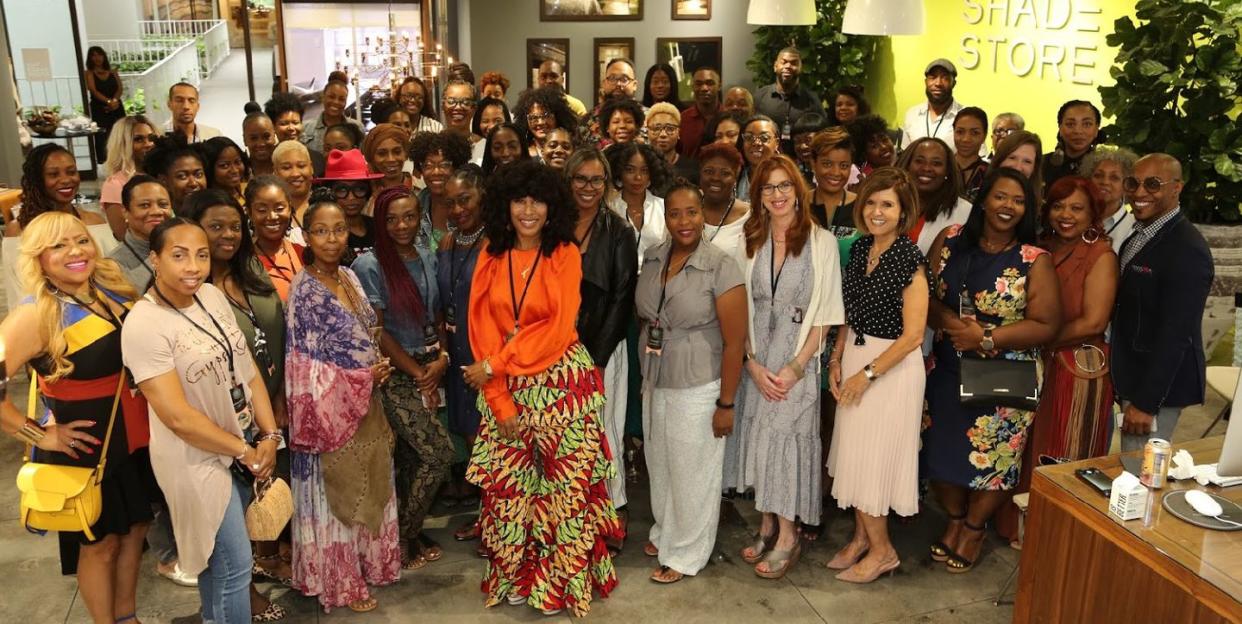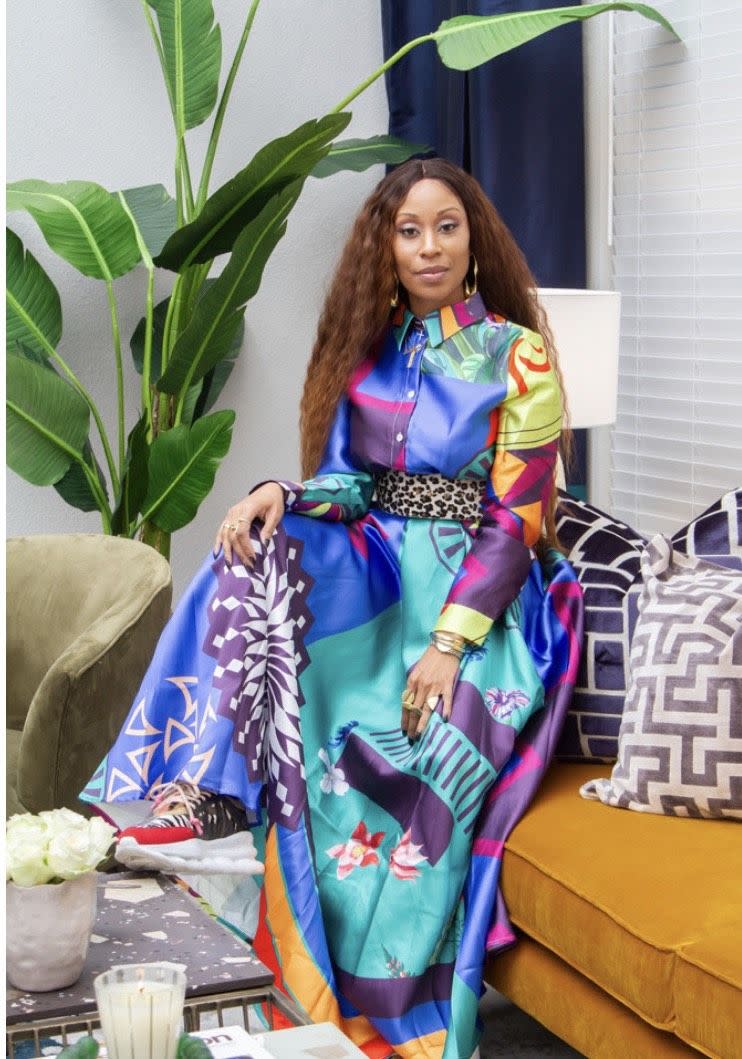10 Ways to Be a Better Ally to Black Designers, According to the Black Interior Designers Network

As the president of the Black Interior Designers Network (BIDN), Keia McSwain pushes to diversify the design world, highlight the work of her network’s 200 talented designers, and, most importantly, create an inclusive community for them. McSwain, a seasoned designer herself, has been through the wringer when it comes to being a Black creative in a not-so-welcoming industry—an experience that inspired her to create a guide for the design world to do better.

The BlDN’s Instagram account is usually a colorful montage of grand interiors, reflective of the network’s talent. But this month, the account went black as BIDN launched a social media campaign urging the industry to rethink and reframe their actions. Take a look at its feed and you'll see several calls for change. One post, The Designer Ally “How To” list— which offers ten ways for one to help support Black designers—quickly went viral in the industry. Why? Because as an industry, we have failed our fellow Black creatives, and it's time we fix that.
McSwain explains that this list is a general synopsis of what Black creatives face at work. It combines “what we've all expressed on some level or another of dealing with in the interior design industry. I think all of us, in some way, form or fashion, have experienced two or more of these microaggressions."
The list starts off with a simple point: "Stop colorblindness." When you claim you "don't see color," you negate the experience of Black designers, where color may well play a big role. While BIDN members want to be seen for the talent beyond their skin tone, the reality is that it often dictates their experiences. Admitting this is the first step to recognizing the problems.
Building off of that, other points on the list encourage allies to initiate those uncomfortable conversations about racism with their coworkers, and for showroom reps to actually reach out to Black artists. Furthermore, BIDN calls on non-Black organizations to consider partnering with pro-Black organizations (note: BIDN is not an exclusively Black network and welcomes all members of all colors, as long they support their mission).
A post shared by Black Interior Designers (@blackinteriordesignersnetwork) on Jun 8, 2020 at 4:10pm PDT
The list also calls for increased opportunities for Black creatives to be a part of expert panels. As McSwain explains, her community is most often tapped to talk “about diversity and what it's like to be black in the industry.” However, Black designers have much more to say—not to mention, the same expertise as their white counterparts to weigh in on the heavy design topics.
The list delves deeper with points that tap into the deep roots of discrimination of design. To explain the point "Stop comparing your shopping experience to those of black people," McSwain gives a hypothetical scenario: If she walks into an upholstery store, there is a chance that the employees might not greet her or ask her if she needs any help. "It’s happened," she says. “They don't get up. They don't say hello. Nothing. I leave. It's like I was never there. They don't even say bye."
While a white designer might claim that the same has happened to them, and therefore the experience stems from rudeness, not racism, there's a difference in worldview that enables white designers to assume that. To Black designers, McSwain explains, "It stems from a microaggression, an insinuation that I'm there and I don't have the money to spend. The employee; therefore, believes that they’re wasting their time by coming over being courteous to me, and doing their job."
Another important point on the list: “Stop discriminatory minimum account engagement.” McSwain notes that African Americans may have higher instances of bad credit and debt, despite the fact that “statistics have shown that Black people pay their bills and their credit cards.” (Again, this stems from systemic discrimination). This speculation has caused vendors and businesses to increase minimums on accounts, which unfairly excludes designers with smaller budgets. "They began putting small hurdles in the way for people to open their accounts and therefore, for them to be great and creative at what they're doing," says McSwain.
McSwain also notes that despite the mistreatment of Black designers, the industry is reaping the benefits of their culture. “The African design aesthetic is pretty much flooding our industry right now,” she points out. Decor elements like Bamileke stools, Senegalese beads, ostrich egg centerpieces, and more aren’t always being attributed to African culture, but instead pegged as “worldly,” McSwain notes.
"So now you have this idea that white designers started a whole trend," says McSwain. "But no—they didn't start a trend. The trend was already there, but the trend was taken. The trend was stolen. And the trend was reintroduced. And non-Black designers capitalize off of it."
This practice of designers misappropriating Black culture inspired BIDN’s point "Stop pushing Eurocentric design as the design blueprint." White designers are often behind the Black art that is popping up in clients' homes. There’s nothing wrong with enjoying Black art, McSwain says, but she notes that "when Black designers only have black art, it's a problem." Clients are opting for White designers who can create “worldly” designs rather than Black designers who can curate authentic interiors reflective of their culture (meanwhile, these designs are considered "worldly" or "exotic" because the design industry uses European design as the standard or default). McSwain recalls that during her career, she's watched industry professionals gawk at her "too black" work.
She also points to the expectation of Black designers to take all this in stride. “I come, I create. And I have to be the nice Black person when you skip over me," she says.
With the Designer Ally How-To's, McSwain wants the industry's non-Black voices to step up to end experiences like these. "The only way we’ll go far is with you," she says. And, though these experiences are nothing new for Black designers, with the country in the midst of a new reckoning with racism, McSwain hopes this can serve as an opportunity for real change. "If your reason [for not being an ally] is you didn't know, that's why we made this," she explains. "We created these bullets to further educate. We want you to take action. It's not on us anymore. It's on you."
To show your support to BIDN, you can donate here. You can also reshare the Instagram post to help circulate the network's points. But the best thing you can do is be better.
Follow House Beautiful on Instagram.
You Might Also Like

